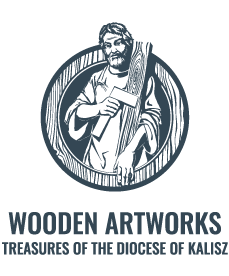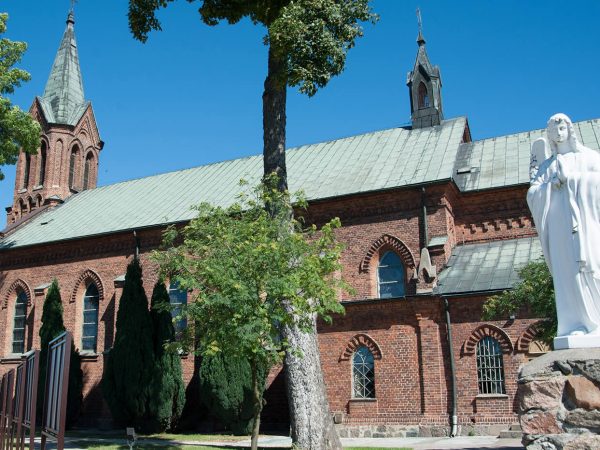Wooden monuments
Gothic resurrected
The church and its furnishings have a neogothic character. Neo-gothic style, similarly to other ‘neo’ styles (neo-baroque, neo-renaissance, neo-classicism) was alive during 19th and 20th centuries in the whole Europe. The inspiration for the style was gothic art, which in architecture characterised first and foremost by perpendicular, slender silhouette of buildings and the use of equilateral pointed arches. Their shape resembled hands put to prayer which should go up to God.
The objects below possess ornamental elements characteristic to the neo-gothic style mentioned above. That is why they constitute a magnificant, stylistically uniform “set”.
- Blue colour – reserved for Virgin Mary’s robes and a sym- bol of heaven (dye in this colour was the most expensive one).
- The image of the Holy Mother with Child covered by the image of All Saints (patron saints of the church).
- St. Peter with Key – “I will give you the keys of the kingdom of heaven; whatever you bind on earth will be bound in heaven, and whatever you loose on earth will be loosed in heaven’” (Mt 16, 18-19).
- St. Paul with a sword with which he was beheaded.
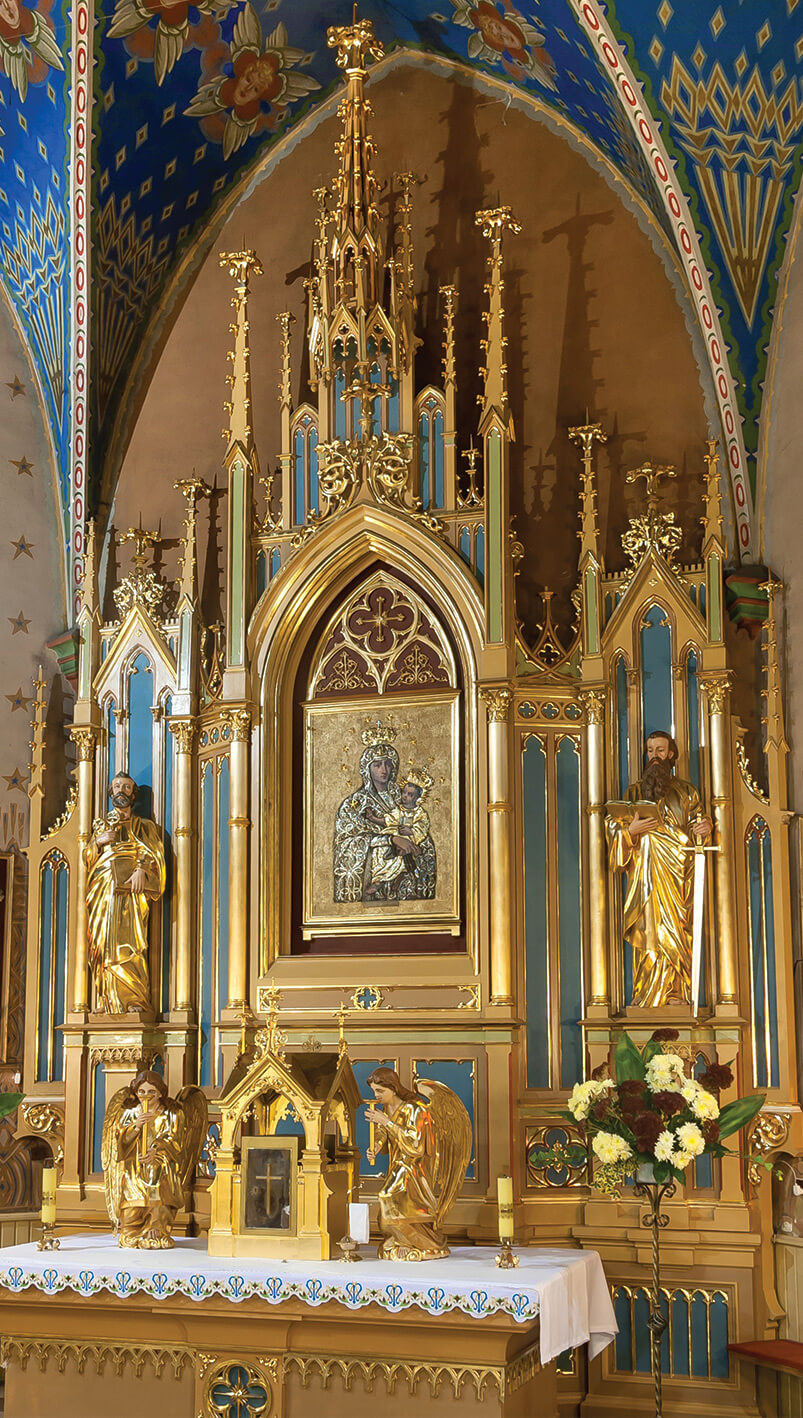

Artists-craftsmen who made the furinishings of the church tried to include not only style elements but also decorations rich in symbolism. Each of the artists was very talented and possessed the „divine spark”.
- Silvered statue of a dove which symbolizes the Holy Spirit.
- A scene of Christ’s baptizm in the Jordan river.
- Gold colour – the symbol of the Kingdom of Heaven, eternal life and sainthood.
- Figures of Christ and the four evangelists (St. Matthew, St. Mark, St. Luke and St. John) in arcades with pointed arches.
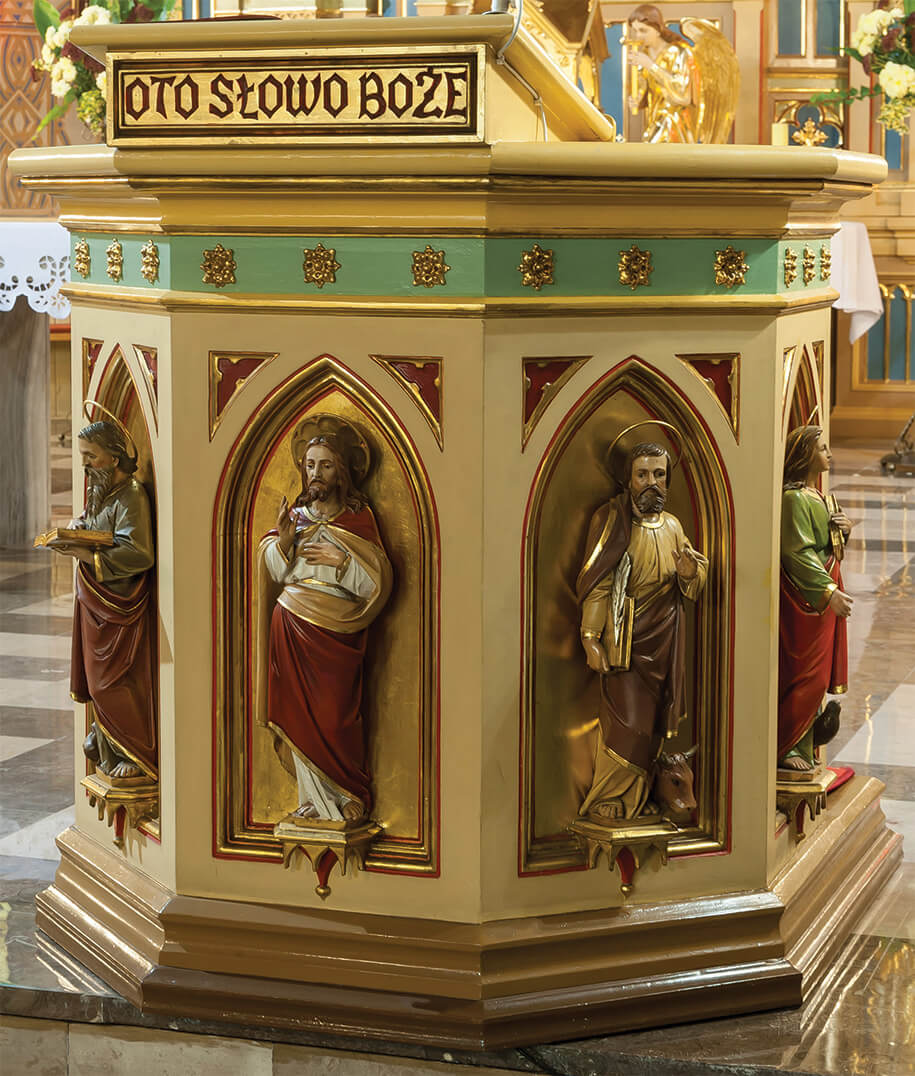

Indulgences
1 listopada (Wszystkich Świętych) oraz I niedziela października (Matki Boskiej Różańcowej)
